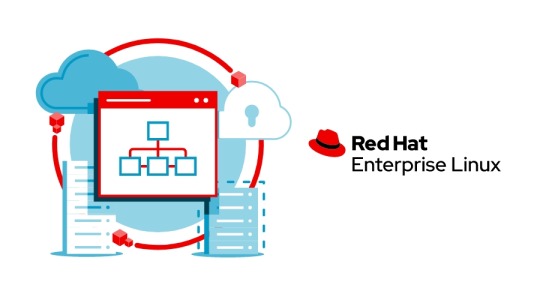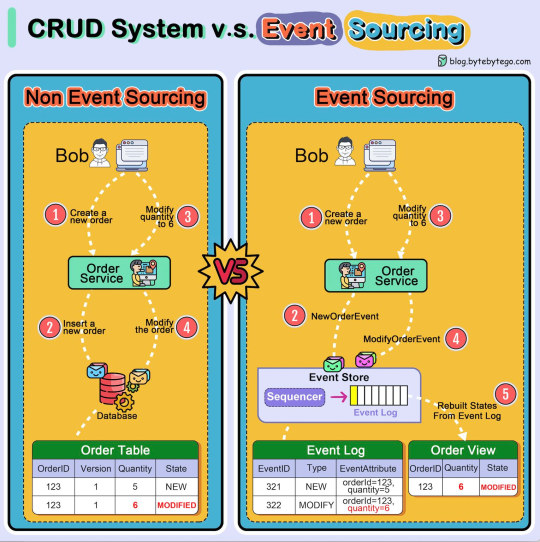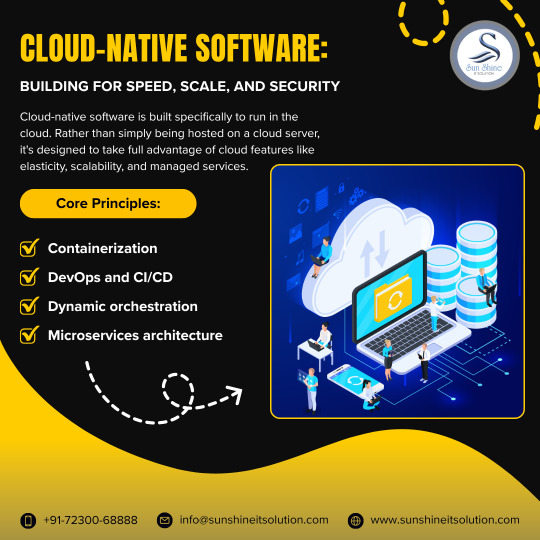#microservices
Explore tagged Tumblr posts
Text
Ready to future-proof your applications and boost performance? Discover how PHP microservices can transform your development workflow! 💡
In this powerful guide, you'll learn: ✅ What PHP Microservices Architecture really means ✅ How to break a monolithic app into modular services ✅ Best tools for containerization like Docker & Kubernetes ✅ API Gateway strategies and service discovery techniques ✅ Tips on error handling, security, and performance optimization
With real-world examples and practical steps, this guide is perfect for developers and teams aiming for faster deployment, independent scaling, and simplified maintenance.
🎯 Whether you’re a solo developer or scaling a product, understanding microservices is the key to next-level architecture.
🌐 Brought to you by Orbitwebtech, Best Web Development Company in the USA, helping businesses build powerful and scalable web solutions.
📖 Start reading now and give your PHP projects a cutting-edge upgrade!
2 notes
·
View notes
Text
Microservices vs Monolith: Choosing the Right Architecture

Content: When developing software systems, architecture is one of the first and most impactful decisions. Two primary models dominate: monolithic applications and microservices architectures.
Monoliths consolidate all functions into a single unit, making them easier to build initially. However, they often become cumbersome as the codebase grows, making deployments riskier and updates slower.
Microservices, on the other hand, break applications into independent services that communicate over APIs. Each service is loosely coupled, allowing teams to work independently, use different tech stacks, and scale specific components without overhauling the entire system.
However, microservices come with their own challenges: higher complexity, the need for service orchestration, and potential for network latency.
Choosing between monolith and microservices depends largely on your team's size, project complexity, and long-term goals. Companies uses tools like Software Development assist in evaluating your needs to design the most appropriate architecture, balancing scalability with simplicity.
Ultimately, it’s not about trends—it’s about choosing what fits your project’s current and future states.
Before jumping into microservices, ensure your team masters clean modular design within a monolith first—it’ll make the transition smoother if/when you need it.
3 notes
·
View notes
Text
so it turns out they weren't kidding when they said breaking a monolith into microservices is hard.
#programming#enterprise software#enterprise application development#microservices#it also doesn't help that some folks need to BANNED from writing SQL queries
3 notes
·
View notes
Text
microservice architecture is just one giant Rube Goldberg machine throwing JSON at each other

5 notes
·
View notes
Text
youtube
The Best DevOps Development Team in India | Boost Your Business with Connect Infosoft
Please Like, Share, Subscribe, and Comment to us.
Our experts are pros at making DevOps work seamlessly for businesses big and small. From making things run smoother to saving time with automation, we've got the skills you need. Ready to level up your business?
#connectinfosofttechnologies#connectinfosoft#DevOps#DevOpsDevelopment#DevOpsService#DevOpsTeam#DevOpsSolutions#DevOpsCompany#DevOpsDeveloper#CloudComputing#CloudService#AgileDevOps#ContinuousIntegration#ContinuousDelivery#InfrastructureAsCode#Automation#Containerization#Microservices#CICD#DevSecOps#CloudNative#Kubernetes#Docker#AWS#Azure#GoogleCloud#Serverless#ITOps#TechOps#SoftwareDevelopment
2 notes
·
View notes
Text
Development Architectures: Monolith vs. Microservice
Unveiling the two titans of development architecture: the monolithic giant and the microservices army. Discover their strengths, weaknesses, and which reigns supreme for your next project. In this episode of Development Architectures: Monolith vs. Microservice.
2 notes
·
View notes
Text
Optimizing Performance on Enterprise Linux Systems: Tips and Tricks
Introduction: In the dynamic world of enterprise computing, the performance of Linux systems plays a crucial role in ensuring efficiency, scalability, and reliability. Whether you're managing a data center, cloud infrastructure, or edge computing environment, optimizing performance is a continuous pursuit. In this article, we'll delve into various tips and tricks to enhance the performance of enterprise Linux systems, covering everything from kernel tuning to application-level optimizations.
Kernel Tuning:
Adjusting kernel parameters: Fine-tuning parameters such as TCP/IP stack settings, file system parameters, and memory management can significantly impact performance. Tools like sysctl provide a convenient interface to modify these parameters.
Utilizing kernel patches: Keeping abreast of the latest kernel patches and updates can address performance bottlenecks and security vulnerabilities. Techniques like kernel live patching ensure minimal downtime during patch application.
File System Optimization:
Choosing the right file system: Depending on the workload characteristics, selecting an appropriate file system like ext4, XFS, or Btrfs can optimize I/O performance, scalability, and data integrity.
File system tuning: Tweaking parameters such as block size, journaling options, and inode settings can improve file system performance for specific use cases.
Disk and Storage Optimization:
Utilizing solid-state drives (SSDs): SSDs offer significantly faster read/write speeds compared to traditional HDDs, making them ideal for I/O-intensive workloads.
Implementing RAID configurations: RAID arrays improve data redundancy, fault tolerance, and disk I/O performance. Choosing the right RAID level based on performance and redundancy requirements is crucial.
Leveraging storage technologies: Technologies like LVM (Logical Volume Manager) and software-defined storage solutions provide flexibility and performance optimization capabilities.
Memory Management:
Optimizing memory allocation: Adjusting parameters related to memory allocation and usage, such as swappiness and transparent huge pages, can enhance system performance and resource utilization.
Monitoring memory usage: Utilizing tools like sar, vmstat, and top to monitor memory usage trends and identify memory-related bottlenecks.
CPU Optimization:
CPU affinity and scheduling: Assigning specific CPU cores to critical processes or applications can minimize contention and improve performance. Tools like taskset and numactl facilitate CPU affinity configuration.
Utilizing CPU governor profiles: Choosing the appropriate CPU governor profile based on workload characteristics can optimize CPU frequency scaling and power consumption.
Application-Level Optimization:
Performance profiling and benchmarking: Utilizing tools like perf, strace, and sysstat for performance profiling and benchmarking can identify performance bottlenecks and optimize application code.
Compiler optimizations: Leveraging compiler optimization flags and techniques to enhance code performance and efficiency.
Conclusion: Optimizing performance on enterprise Linux systems is a multifaceted endeavor that requires a combination of kernel tuning, file system optimization, storage configuration, memory management, CPU optimization, and application-level optimizations. By implementing the tips and tricks outlined in this article, organizations can maximize the performance, scalability, and reliability of their Linux infrastructure, ultimately delivering better user experiences and driving business success.
For further details click www.qcsdclabs.com

#redhatcourses#redhat#linux#redhatlinux#docker#dockerswarm#linuxsystem#information technology#enterpriselinx#automation#clustering#openshift#cloudcomputing#containerorchestration#microservices#aws
1 note
·
View note
Photo

YABI Yet another ByteByteGo Infographic: This one shows the difference between a traditioanl CRUD (create, read, update and delete) system and a more contemporary event sourcing system. Both achieve the same end result but the event sourcing model is more resilient to failure and data corruption. It also scales well in a microservices environment.
Although the diagram does not mention it, the two systems can be used in a complimentary fashion. The CRUD system can be exposed as a typical REST API which is very well understood by developers and quite easy to develop to. Meanwhile, within the organisation the CRUD methods can easily proxy to events. The net result is a modern event sourcing system internally with a low friction REST API for integration.
(via https://substack-post-media.s3.amazonaws.com/public/images/0a124ddf-8104-48fc-8f61-e190a73579e9_1529x1536.jpeg (1529×1536))
2 notes
·
View notes
Text

🚀 Cloud-Native Software: Building for Speed, Scale, and Security 🛡️☁️
In today’s fast-moving digital landscape, “cloud-native” is more than a buzzword — it’s a mindset.
✅ Speed: Continuous integration & delivery (CI/CD) pipelines enable rapid releases, empowering teams to innovate without the friction of legacy deployment.
✅ Scale: Microservices and container orchestration (hello, Kubernetes!) let platforms grow elastically — scaling up during peak demand and down when quiet, optimizing both performance and cost.
✅ Security: With zero-trust architecture, policy-as-code, and DevSecOps baked into the pipeline, cloud-native doesn’t just ship fast — it ships safely.
Companies embracing cloud-native are building software that can adapt in real time, recover instantly, and deliver value continuously. The competitive edge? Faster time-to-market, resilience by design, and user trust through secure-by-default systems.
🌐 Whether you're modernizing a monolith or building greenfield, cloud-native is the future.
Explore Our Linkedin Page - https://www.linkedin.com/company/28703283/admin/dashboard/
Please explore our YouTube channel for informative videos. https://www.youtube.com/@sunshineitsolutions
Visit our blog for informative business ideas https://www.blog.sunshiene.com/
Contact Us :- https://wa.me/+91-7230068888
WhatsApp Channel ( Subscribe for more updates ) https://whatsapp.com/channel/0029Vb0QMGg0bIdggODhE22T
#CloudNative#DevOps#Kubernetes#Microservices#Security#CI_CD#DigitalTransformation#TechLeadership#CloudComputing#SoftwareEngineering#SunShineItSolution#SunShine#ItCompanySunShine#SoftwareDevelopmentCompany
0 notes
Text
Why DevOps and Microservices Are a Perfect Match for Modern Software Delivery
In today’s time, businesses are using scalable and agile software development methods. Two of the most transformative technologies, DevOps and microservices, have achieved substantial momentum. Both of these have advantages, but their full potential is seen when used together. DevOps gives automation and cooperation, and microservices divide complex monolithic apps into manageable services. They form a powerful combination and allow faster releases, higher quality, and more scalable systems.
Here's why DevOps and microservices are ideal for modern software delivery:
1. Independent Deployments Align Perfectly with Continuous Delivery
One of the best features of microservices is that each service can be built, tested, and deployed separately. This decoupling allows businesses to release features or changes without building or testing the complete program. DevOps, which focuses on continuous integration and delivery (CI/CD), thrives in this environment. Individual microservices can be fitted into CI/CD pipelines to enable more frequent and dependable deployments. The result is faster innovation cycles and reduced risk, as smaller changes are easier to manage and roll back if needed.
2. Team Autonomy Enhances Ownership and Accountability
Microservices encourage small, cross-functional teams to take ownership of specialized services from start to finish. This is consistent with the DevOps principle of breaking down the division between development and operations. Teams that receive experienced DevOps consulting services are better equipped to handle the full lifecycle, from development and testing to deployment and monitoring, by implementing best practices and automation tools.
3. Scalability Is Easier to Manage with Automation
Scaling a monolithic application often entails scaling the entire thing, even if only a portion is under demand. Microservices address this by enabling each service to scale independently based on demand. DevOps approaches like infrastructure-as-code (IaC), containerization, and orchestration technologies like Kubernetes make scaling strategies easier to automate. Whether scaling up a payment module during the holiday season or shutting down less-used services overnight, DevOps automation complements microservices by ensuring systems scale efficiently and cost-effectively.
4. Fault Isolation and Faster Recovery with Monitoring
DevOps encourages proactive monitoring, alerting, and issue response, which are critical to the success of distributed microservices systems. Because microservices isolate failures inside specific components, they limit the potential impact of a crash or performance issue. DevOps tools monitor service health, collect logs, and evaluate performance data. This visibility allows for faster detection and resolution of issues, resulting in less downtime and a better user experience.
5. Shorter Development Cycles with Parallel Workflows
Microservices allow teams to work on multiple components in parallel without waiting for each other. Microservices development services help enterprises in structuring their applications to support loosely connected services. When combined with DevOps, which promotes CI/CD automation and streamlined approvals, teams can implement code changes more quickly and frequently. Parallelism greatly reduces development cycles and enhances response to market demands.
6. Better Fit for Cloud-Native and Containerized Environments
Modern software delivery is becoming more cloud-native, and both microservices and DevOps support this trend. Microservices are deployed in containers, which are lightweight, portable, and isolated. DevOps tools are used to automate processes for deployment, scaling, and upgrades. This compatibility guarantees smooth delivery pipelines, consistent environments from development to production, and seamless rollback capabilities when required.
7. Streamlined Testing and Quality Assurance
Microservices allow for more modular testing. Each service may be unit-tested, integration-tested, and load-tested separately, increasing test accuracy and speed. DevOps incorporates test automation into the CI/CD pipeline, guaranteeing that every code push is validated without manual intervention. This collaboration results in greater software quality, faster problem identification, and reduced stress during deployments, especially in large, dynamic systems.
8. Security and Compliance Become More Manageable
Security can be implemented more accurately in a microservices architecture since services are isolated and can be managed by service-level access controls. DevOps incorporates DevSecOps, which involves integrating security checks into the CI/CD pipeline. This means security scans, compliance checks, and vulnerability assessments are performed early and frequently. Microservices and DevOps work together to help enterprises adopt a shift-left security approach. They make securing systems easier while not slowing development.
9. Continuous Improvement with Feedback Loops
DevOps and microservices work best with feedback. DevOps stresses real-time monitoring and feedback loops to continuously improve systems. Microservices make it easy to assess the performance of individual services, find inefficiencies, and improve them. When these feedback loops are integrated into the CI/CD process, teams can act quickly on insights, improving performance, reliability, and user satisfaction.
Conclusion
DevOps and microservices are not only compatible but also complementary forces that drive the next generation of software delivery. While microservices simplify complexity, DevOps guarantees that those units are efficiently produced, tested, deployed, and monitored. The combination enables teams to develop high-quality software at scale, quickly and confidently. Adopting DevOps and microservices is helpful and necessary for enterprises seeking to remain competitive and agile in a rapidly changing market.
#devops#microservices#software#services#solutions#business#microservices development#devops services#devops consulting services
0 notes
Text
🖥️ Master Core Java & Full Stack Java with Mr. Kishan! 🚀
Are you eager to become a versatile Java developer in 2025? Join industry expert Mr. Kishan for a comprehensive Core Java & Full Stack Java training program, starting 19th June at 7:30 AM (IST). Whether you’re a complete beginner or looking to solidify your programming foundation, this course equips you with the skills employers demand.
What You’ll Learn:
Core Java Essentials: Data types, OOP principles, exception handling
Advanced Java: Collections, multithreading, I/O streams
Spring Boot & Microservices: Build scalable, production‑ready APIs
Frontend Technologies: HTML, CSS, JavaScript, and Angular basics
Real‑Time Projects: Hands‑on labs that mirror industry scenarios
Version Control & Deployment: Git, GitHub, and cloud deployment strategies

By the end of this program, you’ll not only write clean, efficient Java code but also develop and deploy full‑stack applications—making you a strong candidate for junior developer roles.
📌 Register Now → https://tr.ee/AbATLN 💬 Feel free to reach out if you need further assistance or information! 🔍 Explore more free demo courses → https://linktr.ee/ITcoursesFreeDemos
Transform your passion for coding into a rewarding career. With expert guidance, real‑world projects, and dedicated support, Naresh i Technologies ensures you’re ready to tackle any Java challenge that comes your way. Don’t just learn—build, deploy, and succeed!
#CoreJava#FullStackJava#JavaTraining#SpringBoot#Microservices#Angular#WebDevelopment#NareshIT#LearnToCode#TechSkills#PlacementAssistance#CareerReady
0 notes
Text
Drive Explosive Business Growth with PHP Microservices Architecture
Looking to scale your business faster, smarter, and more efficiently? The answer lies in PHP microservices architecture a powerful way to break down your applications into lightweight, independent services that work in harmony.
💡 In this guide, we’ll show you how adopting microservices can: 🔹 Boost your application’s speed and scalability 🔹 Streamline team collaboration with modular codebases 🔹 Improve fault isolation and make updates seamless 🔹 Deliver personalized, high-performing user experiences
Whether you're building an eCommerce platform, SaaS product, or custom web solution PHP microservices let you stay agile and ready to innovate. No more one-size-fits-all backend headaches. It’s time to unlock the full potential of your business tech.
🔥 Empower your development strategy. Accelerate your growth. Create future-ready digital solutions with confidence.
🌐 Brought to you by Orbitwebtech, Best Web Development Company in the USA, trusted by businesses to build scalable, secure, and innovative PHP solutions.
#microservices#php#businessgrowth#techforbusiness#webdevelopment#phpdevelopers#MicroservicesArchitecture
1 note
·
View note
Text
Java Modules in Modern Microservices: A Winning Combination
In the world of modern software development, microservices architecture has become a popular choice for building scalable and maintainable systems. However, as the number of services grows, managing dependencies and maintaining a consistent architecture can become a challenge. This is where Java modules come in – a powerful tool for organizing and structuring your codebase. Java modules, introduced in Java 9, provide a way to group related classes and interfaces into a single unit, making it easier to manage dependencies and maintain a consistent architecture. By using Java modules, you can create a modularized architecture that is easy to understand, test, and maintain. In this article, we'll explore the benefits of using Java modules in modern microservices architecture and provide best practices for implementing them effectively. We'll also discuss how IAMDevBox.com can help you get started with Java modules and microservices. Read more: Java Modules in Modern Microservices: A Winning Combination
0 notes
Text
youtube
Monolithic vs Microservices — What Should You Build
Choosing the wrong architecture too early can cost you years of tech debt! Not every product needs microservices Not every startup should start monolithic Let’s break it down :- ❓When will you need Monolithic architecture? Monolith is focused, fast, and manageable ✅ You’re building an MVP or early-stage product ✅ Your app is simple, with tightly coupled features ✅ You need to launch quickly with a small dev team ✅ Deployment speed matters more than modularity ❓When will you need Microservices? Microservices are scalable, flexible, and complex ✅ You’ve scaled and need feature-specific deployments ✅ Your teams work on different modules in parallel ✅ You want fault isolation and independent scaling ✅ Continuous deployment and DevOps are in place ⚠️ Don’t follow trends. Follow your product’s stage and your team's capability. Get expert guidance tailored to your tech stack and business goals. Call - +91 9073754444 or book a FREE consultation - https://wseinfratech.com/book-a-free-consultation
#distributed systems#microservices#java#monolith#monolith vs microservices#what is microservices#monolithic application#website development#software development#software development company#custom software development#custom website development#java microservices#web development company#aws microservices#api#api gateway#monolithic structure#website architecture#what is api gateway#web development planning#building api#custom software#custom website#Youtube
1 note
·
View note
Text
Learn how to build powerful microservices using Node.js – from architecture to deployment.
#nodejsapplications#nodejsdevelopers#node.js#nodejsdeveloper#nodejs#microservices architecture#microservices#microservice
0 notes
Text
Boost Microservices Startup-Spring Boot, CDS & Java Project Leyden
Estimated reading time: 14 minutes In the fast-evolving landscape of cloud-native and serverless applications especially microservices, runtime efficiency is paramount. Performance requirements might expect some microservices to start and be available without any measurable delays. Due to startup delays inherent in the Java platform, it is difficult to have applications booting with sub-second…

View On WordPress
#Ahead of Time Cache#Ahead of Time Computation#AOT#AOT Java#cds#Class Data Sharing#jdk24#jdk25#Microservices#Microservices Architecture#openjdk#project leyden#runtime efficiency#Spring Boot Microservices
0 notes